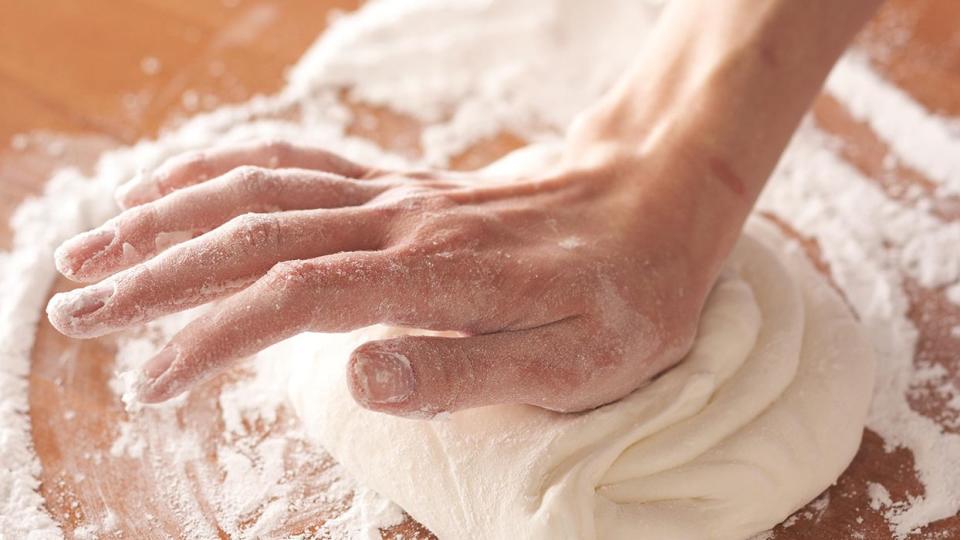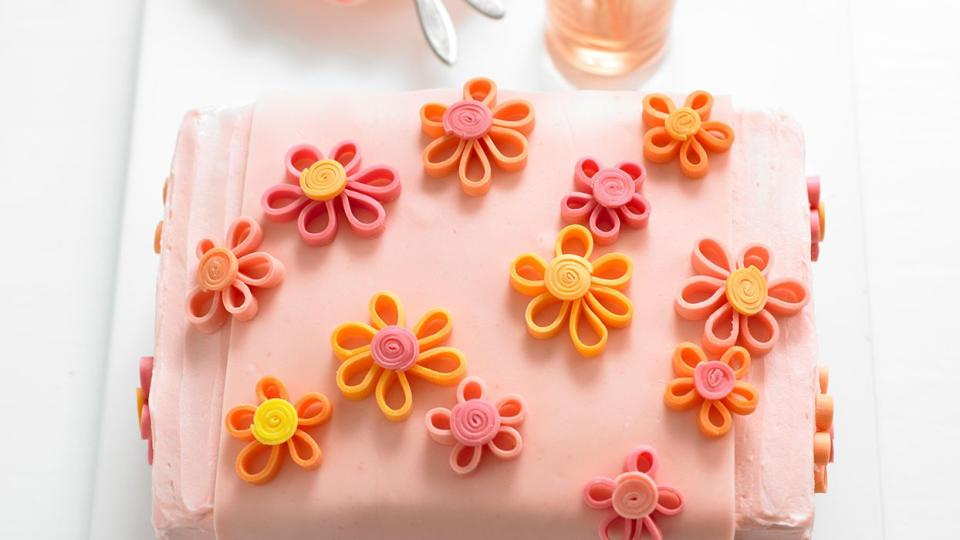How to Make Fondant the Easy Way

Why should you learn how to make homemade fondant? Because it will take your cake decorating skills to the next level. Cake fondant is a versatile mixture that can be colored, flavored, rolled, imprinted, and cut into any shape. Plus, it's the only way to get that precise, porcelain-smooth look that transforms birthday or wedding cakes into showstoppers. And while you can buy pre-made fondant, this homemade recipe is softer and easier to work with. We'll show you how to make marshmallow fondant in the microwave with just a handful of easy-to-find ingredients, versus a traditional fondant recipe, which requires careful temperature monitoring with a candy thermometer.

Jason Donnelly
How to Make Marshmallow Fondant
If you're new to making fondant, we think this is best place to start.
Test Kitchen Tip: If you want to know how to make fondant without marshmallows, try our classic fondant recipe. Another option is our shortcut fondant recipe.
Here's how to make marshmallow fondant, step-by-step:
In a medium, microwave-safe bowl like the one from this mixing bowl set ($40, Williams Sonoma) combine 3 cups of tiny marshmallows; ½ ounce finely chopped white baking chocolate with cocoa butter; 1 tablespoon butter, cut up; and 1½ teaspoons of milk or whipping cream.
Microwave on high 1 minute, or until the marshmallows begin to melt and are puffy. Stir the marshmallow mixture until smooth (if necessary, return to the microwave to continue melting).
Stir 1 teaspoon clear vanilla* into the marshmallow mixture. Stir in 1½ cups of powdered sugar.
Sprinkle a work surface with about a ½ cup of powdered sugar. Transfer the marshmallow mixture onto the prepared work surface and begin kneading. Sprinkle with additional powdered sugar as needed, kneading until the fondant is smooth and no longer sticky (about 10 minutes). Use the fondant immediately, or for storage, see fondant troubleshooting, below.
Test Kitchen Tip: Clear vanilla extract such as this LorAnn Clear Vanilla ($9, Walmart) can be found online or in the cake-decorating department of hobby and crafts stores.
Fondant Troubleshooting
Fondant can seem to have a mind of its own. It can easily get too dry, soft, or sticky, and not always roll out smoothly. Here's how to be the boss of your fondant recipe.
Fondant can dry out quickly. If you need to store it for a short period of time, wrap it in plastic wrap and store it in a resealable plastic bag.
For longer storage, roll the fondant into a ball, then coat it with a little vegetable shortening. Wrap it in plastic wrap, then place the wrapped fondant in an airtight container. Store up to a week.
If fondant is too soft or sticky to roll, knead it in a little additional powdered sugar.
Invest in a silicone mat, such as this OXO pastry mat ($25, Target) for rolling out fondant with a smooth surface and easy release.
Make sure your hands are clean when handling the fondant and avoid wearing clothing with fibers that might shed.
If you are covering a cake or cupcakes with fondant, first cover them lightly with a glaze or buttercream frosting to create a smooth surface.

How to Color and Flavor Fondant
Now that you've mastered making fondant, let the fun part begin—start by coloring and flavoring your fondant the way you like it.
To color fondant, tint the portions you would like to color with food coloring. Knead each portion until the color is even.
Test Kitchen Tip: We recommend gel or paste-style food coloring, such as these Wilton icing colors ($14, Walmart). Because they're more concentrated than liquid food coloring, they'll make the colors of your fondant more rich and vivid. Use the colors as packaged, or combine them to create your own custom colors.
To customize the flavor of your fondant, simply replace the vanilla in the above recipe with a few drops of your favorite extract, such as almond, lemon, or orange.

Jason Donnelly
How to Roll Out Fondant
To use fondant, roll it out with a rolling pin on a surface coated with additional powdered sugar. For large sheets to cover cakes and cupcakes and for cutting out decorations, roll out a sheet about ⅛-inch thick. If you're going to cover a cake, you might want to invest in a special wide rolling pin designed for fondant.

Andy Lyons
How to Decorate with Fondant
Now that your fondant recipe is made, colored, flavored, and rolled, it's time to get down to the real reason you wanted to learn how to make fondant icing: to decorate your cakes like a true artist. For pro-looking results, get the following tools:
Pastry wheel or cutter-embosser: These tools are perfect for cutting decorative strips for edges or borders. You can also create interesting patterns directly on a sheet of fondant, such as a quilt pattern.
Cutters: Small shaped cutters designed just for fondant, such as these Sugarcraft cutter tools ($34, Walmart), are available online and at stores that carry cake-decorating supplies. Use the same technique to cut out fondant shapes as you use cookie cutters for cutting out shaped cookies.
Sugar sprinkles or edible glitter: Sprinkle these onto fondant for high-impact accents. These work great on small accent pieces made of fondant, such as flowers, leaves, and alphabet letters.
Once you've learned how to make fondant, you'll be able to craft stunning special-occasion cakes that will be remembered long after the last crumb is devoured. Keep fondant projects in mind whenever you seek to create something beautiful. Lastly, be sure to remember our marshmallow fondant recipe isn't just for cakes. For a fun project to make with the kids, try these Ghostly Cupcakes.

